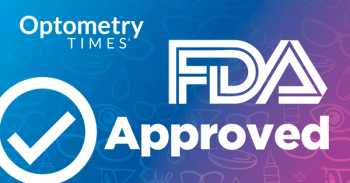
- January Digital Edition 2020
- Volume 12
- Issue 1
Look at more than the optic nerve head in glaucoma patients
Epiretinal membranes can affect accuracy of a glaucooma diagnosis and disease monitoring
I often recall fondly how one of my mentors, Mitch Dul, OD, FAAO, told me that patients can have “as many diseases as they pleases.” We know this to be the case because we see it every day. We go to continuing education conferences where we see nice tidy cases and think, “I got this! This is easy!” Then, we get back to the office on Monday morning and are inundated with a slew of patients with lurking variables in their eyes and visual systems.
Go beyond the optic nerve
I take comfort in the fact that I know I’m not alone, and a paper published in the Korean Journal of Ophthalmology in October 2019 does well to hammer home the fact that, with respect to
This is especially true with
This retrospective study consisted of a cohort of established glaucoma patients with newly diagnosed epiretinal membranes (ERM): 28 eyes of 28 patients (16 males, 12 females). Of this cohort, 22 patients had primary open-angle glaucoma, three had pseudoexfoliative glaucoma, two had uveitic glaucoma, and one had chronic angle-closure glaucoma. Ages ranged from 44 to 73 years with a mean age of 61 years.
Subjects had SD-OCT studies before and after the onset of ERMs. Humphrey visual fields had also been obtained prior to and after ERM onset. Axial length and central corneal thickness values were also taken into consideration, with a mean axial length of 23.5 mm and a mean central corneal thickness of 542.9 μm. Mean spherical equivalent refractive error was 1.40 D of myopia.
The onset of an ERM lead to a mean increase in the average RNFL thickness of 4 μm. The temporal RNFL sector (as one may expect) demonstrated the most significant increase (a mean of 14.4 μm). Such an expectation would be due to the location of the ERM, typically situated temporal to the optic nerve head. The central macular thickness values increased at an average of just over 33 μm after the onset of ERM as compared to before. There was a slight but significant decrease in mean deviation of just under 1 dB in the visual fields.
Study implications
The authors of this paper separate out three distinct and significant arenas for which this study has important implications.
The first aspect has to do with
Secondly, detection of glaucoma progression, at least progression as measured by decrease in RNFL thickness, may be delayed as a progressive ERM begins to throw off SD-OCT results by masquerading as part of the RNFL. Progression means that anti-glaucoma therapy is not achieving its goal.
Lastly, if an ERM becomes significant, it can be surgically removed. In patients who have undergone a vitrectomy and membrane peel, their post-surgical inner retinas will have laid down as compared to their pre-surgical inner
ERM effect on diagnosis
This was a small study, and, being retrospective in nature, not all data was collected at set intervals. However, this study does well to point out the fact that ERM can affect the diagnosis of
SD-OCT technology is getting more similar to in vivo histology as the years ago on, but ODs cannot lose sight of the fact that we have to actually look at patients with our own eyes in order to have the full picture.
As I write this, my mind is drawn to other potential lurking variables with respect to
References:
1. Kim JM, Kim KN, Kim WJ, Kim CS. Influence of epiretinal membranes on the retinal nerve fiber layer thickness measured by spectral domain optical coherence tomography in glaucoma. Korean J Ophthalmol. 2019 Oct;33(5):422-429.
Articles in this issue
over 5 years ago
Why ODs should treat dry eyealmost 6 years ago
Remember the basics as dry eye treatments expandalmost 6 years ago
Go beyond fish oil with astaxanthin in krill oilalmost 6 years ago
Cotton-wool spots lead to tissue loss and RNFL defectalmost 6 years ago
SD-OCT shows schisis advancements due to sickle cellalmost 6 years ago
Why OAB should be considered before cataract removalalmost 6 years ago
Unlock the potential of refractive surgeryalmost 6 years ago
Cataract surgery problem solving: Is technology the answer?almost 6 years ago
Sights are set on perfect vision in 2020Newsletter
Want more insights like this? Subscribe to Optometry Times and get clinical pearls and practice tips delivered straight to your inbox.








































